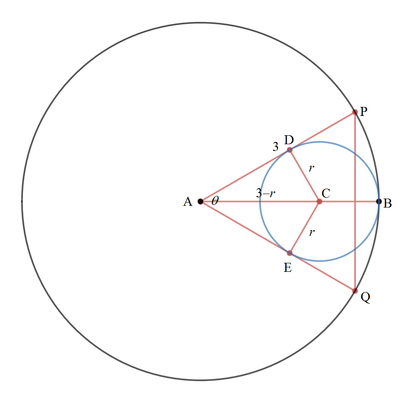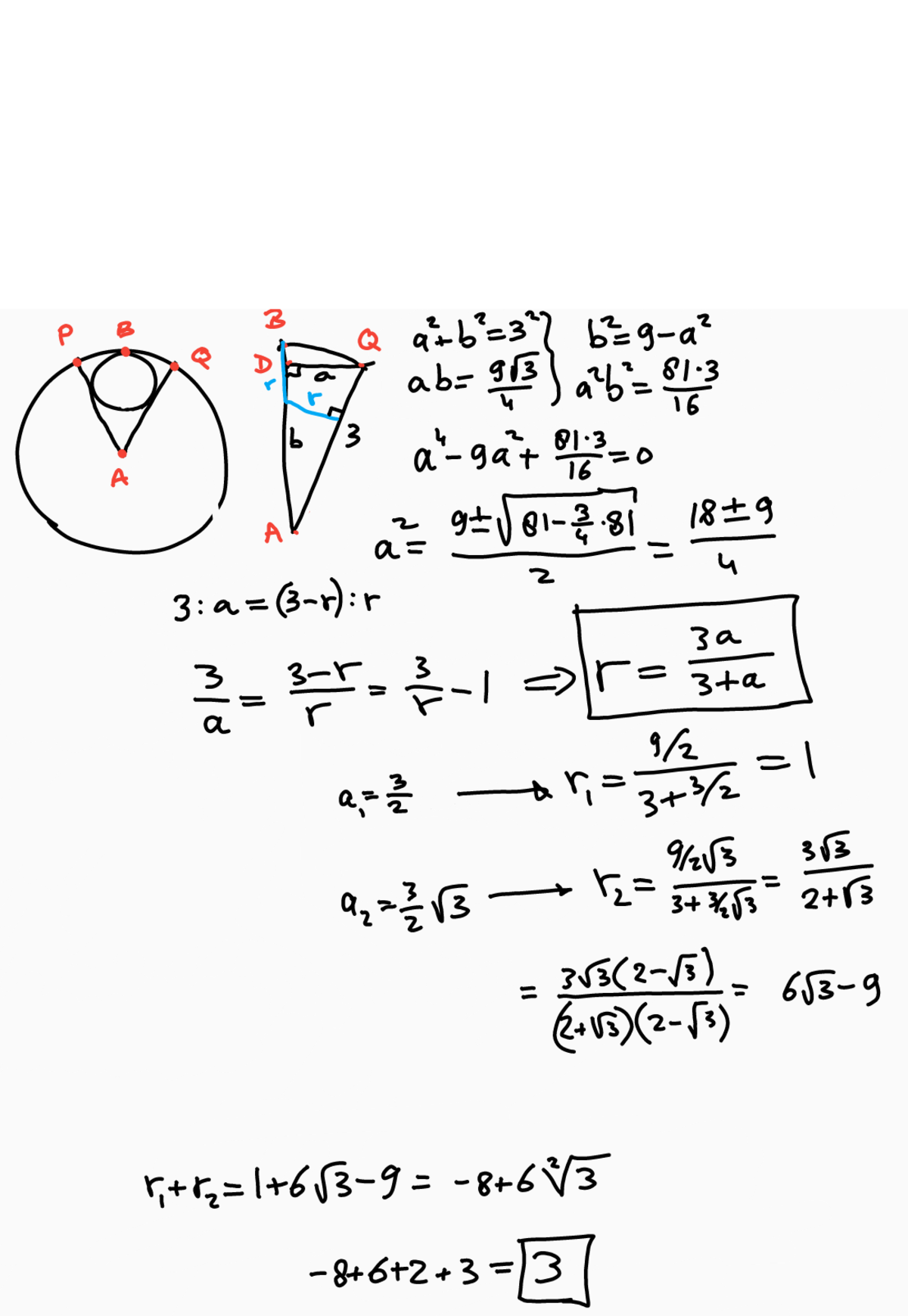Two Circles touching each other
A circle with radius r is tangent internally to a larger circle with center A and radius 3 at a point B . Points P and Q on the larger circle are such that A P and A Q are tangent to the smaller circle.
If the area of △ A P Q is 4 9 3 , the sum of all possible values of r can be expressed as a b c + d , where a , b , c , and d are integers. Find the smallest value of a + b + c + d .
The answer is 3.
This section requires Javascript.
You are seeing this because something didn't load right. We suggest you, (a) try
refreshing the page, (b) enabling javascript if it is disabled on your browser and,
finally, (c)
loading the
non-javascript version of this page
. We're sorry about the hassle.
2 solutions

Let the center of the small circle be C , its radius r , the tangent points of A P and A Q be D and E respectively, and ∠ P A Q = θ . Then the area of △ A P Q :
[ A P Q ] 3 ( 3 − r ) 2 3 r 4 − 3 6 r 3 + 1 6 2 r 2 − 3 2 4 r + 2 4 3 3 r 4 + 6 0 r 3 + 1 8 r 2 − 3 2 4 r + 2 4 3 r 4 + 2 0 r 3 + 6 r 2 − 1 0 8 r + 8 1 ( r − 1 ) ( r + 3 ) ( r 2 + 1 8 r − 2 7 ) ⟹ r = 2 A P ⋅ A Q ⋅ sin ∠ P A Q = 2 3 ⋅ 3 sin θ = 9 sin 2 θ cos 2 θ = ( 3 − r ) 2 9 r ( 3 − r ) 2 − r 2 = 4 r ( 3 − r ) 2 − r 2 = 1 4 4 r 2 − 9 6 r 3 = 0 = 0 = 0 = 1 , − 3 , ± 6 3 − 9 Note that sin 2 θ = 3 − r r Putting [ A P Q ] = 4 9 3 Squaring both sides.
Since r > 0 , the sum of all possible values of r is 1 + 6 3 − 9 = 6 3 − 8 and the required answer is 3 .
@Zakir Husain , I have edited your problem statement, which is nearer to you original version. Hope it is okay.
Let A B and P Q meet in point D , let A D = b and D Q = a . Now △ A D Q and △ A D P are identical right angled triangles. Their combined area equals a b = 4 9 3 The rest of the solution is given below